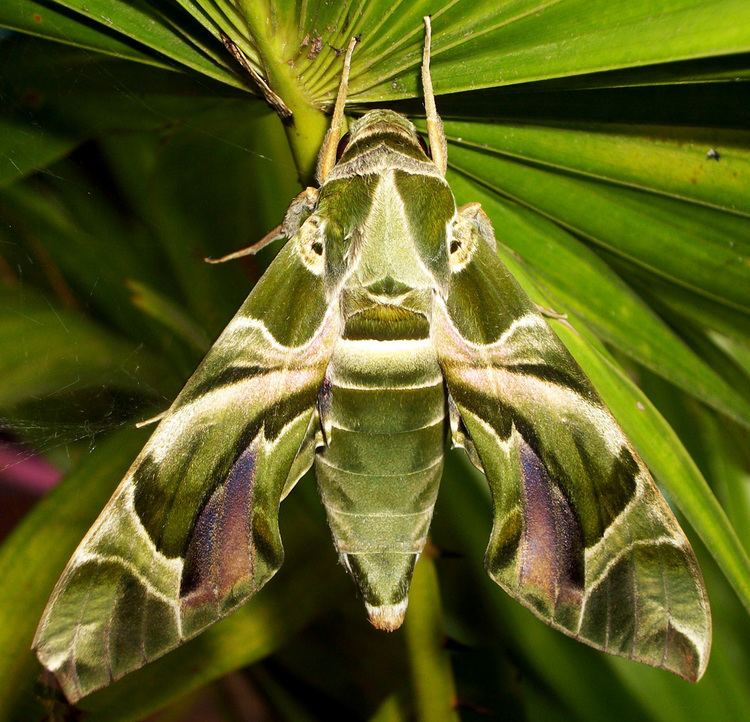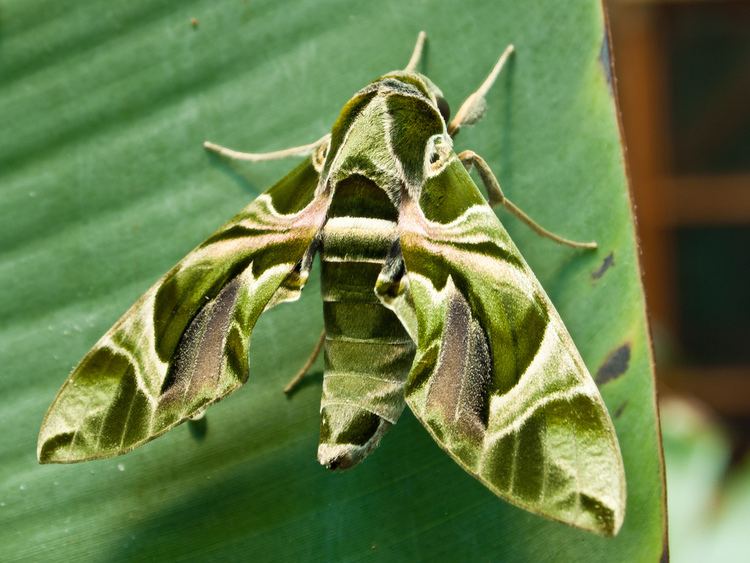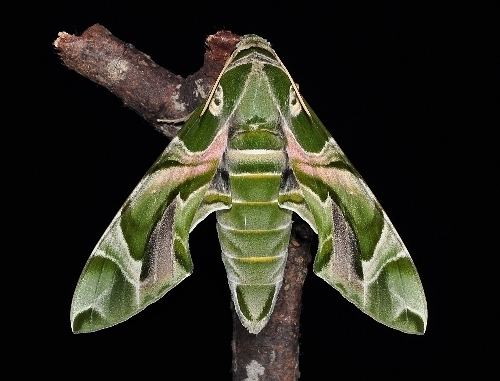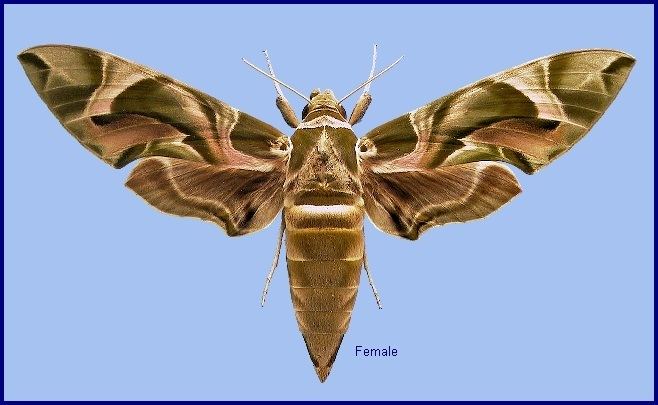Higher classification Daphnis | Scientific name Daphnis nerii Rank Species | |
 | ||
Similar Daphnis, Sphingidae, Butterflies and moths, Insect, Acherontia atropos | ||
phuket birth of a moth daphnis nerii m
Daphnis nerii (formerly Deilephila nerii), the oleander hawk-moth or army green moth, is a moth of the Sphingidae family.
Contents
- phuket birth of a moth daphnis nerii m
- Caterpillar daphnis nerii
- Distribution
- Feeding habits
- Life cycle
- Related species
- References

Caterpillar daphnis nerii
Distribution

Daphnis nerii is a large hawk-moth found in wide areas of Africa and Asia. It is a migratory species, flying to parts of eastern and southern Europe during the summer, particularly Turkey.
Feeding habits

The adults feed on nectar of a great variety of flowers. They have a preference for fragrant species like petunia, jasmine and honeysuckle. They are especially active in the twilight time, hovering over the flowers after sunset.

The caterpillars feed mainly on oleander (Nerium oleander) leaves, a highly toxic plant, to which the caterpillars are immune. They also may feed on most plants of the dogbane family, such as Adenium obesum, Tabernaemontana divaricata and Alstonia scholaris in India.
Life cycle

Newly hatched oleander hawk-moth larvae are three to four millimetres in length, bright yellow, and have a black, elongated ‘horn’ on the rear of the body. As they get older, the larvae become green to brown with a large blue-and-white eyespot near the head and a yellow ‘horn’ on the rear. There is also a white band along the side of the body, with a scattering of small white and bluish dots alongside it. The spiracles on the sides of the body are black. Older oleander hawk-moth larvae measure around 7.5 to 8.5 centimetres in length.
Just before it pupates, the oleander hawk-moth larva becomes browner in colour. The pupa of this species measures around 5.5 to 7.5 centimetres in length, and is light brown with black spots and a black line down the middle.
The pupa is pale reddish or brownish-white and has a wax-like appearance. It lies directly on the earth, under moss or dry leaves.
Adult has a greenish head, with rufous in front and a grey band on vertex. The thorax is green, and the collar outlined in grey. There is a triangular grey patch on the vertex. Abdomen is pale greenish with oblique lines at the side paired dark green lateral blotches on penultimate and a single dorsal blotch on ultimate segment. Forewings are dark green and a white patch with a black spot on it at base. Some medial whitish conjoined bands, rosy towards hind margin. There is a triangular purplish patch from below the cell to near outer margin. Hindwings are fuscous with a pale curved submarginal line, beyond which the area is olivaceus. Ventral side is suffused with chestnut color and a white submarginal line on both wings. A white speck is present at the end of the hindwing.
Larva is greenish, with a bluish lateral bands from 4th somite to horn with white oval spots on it. Ocellus on 3rd somite is bluish. Horn is yellowish.
